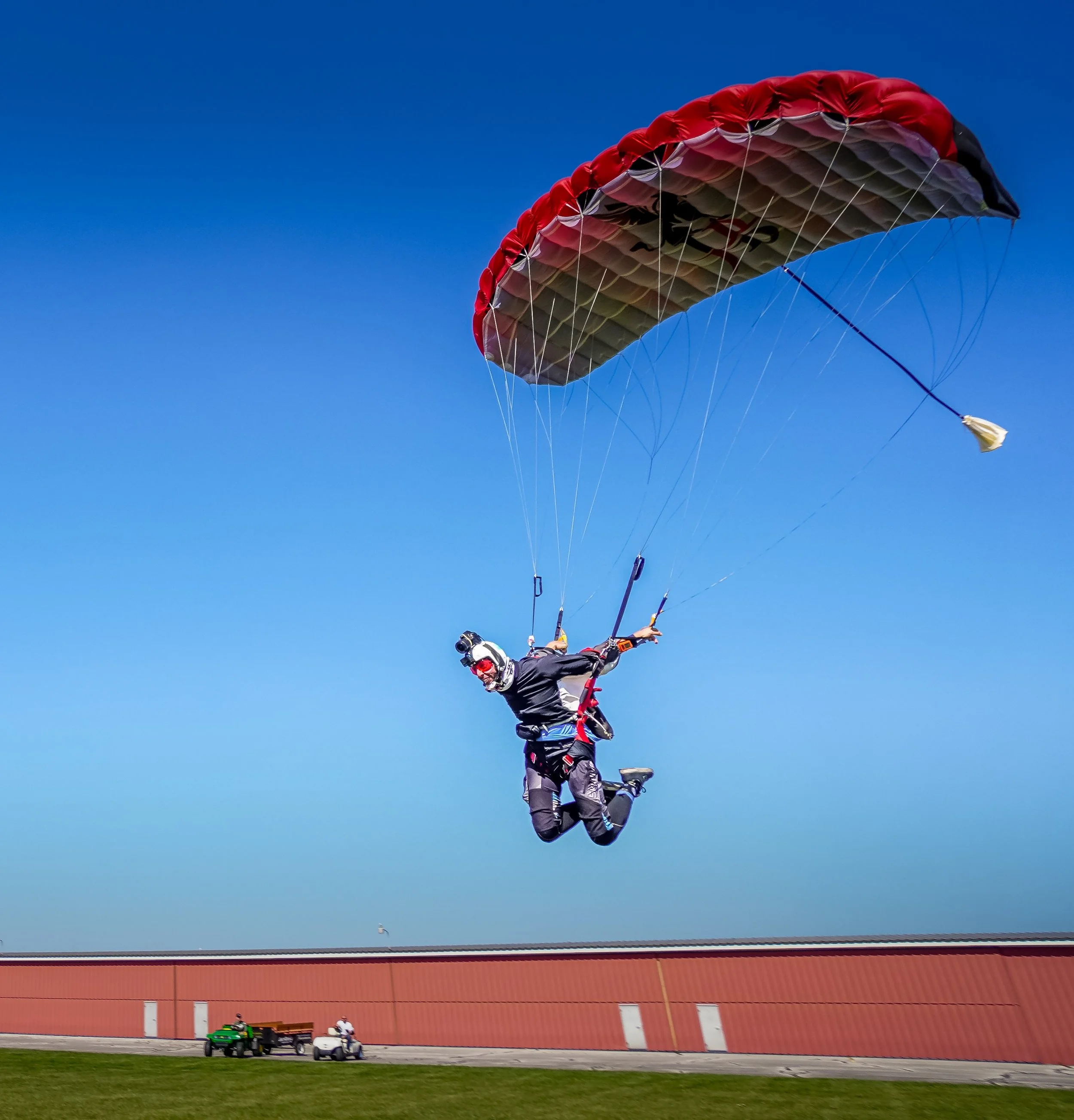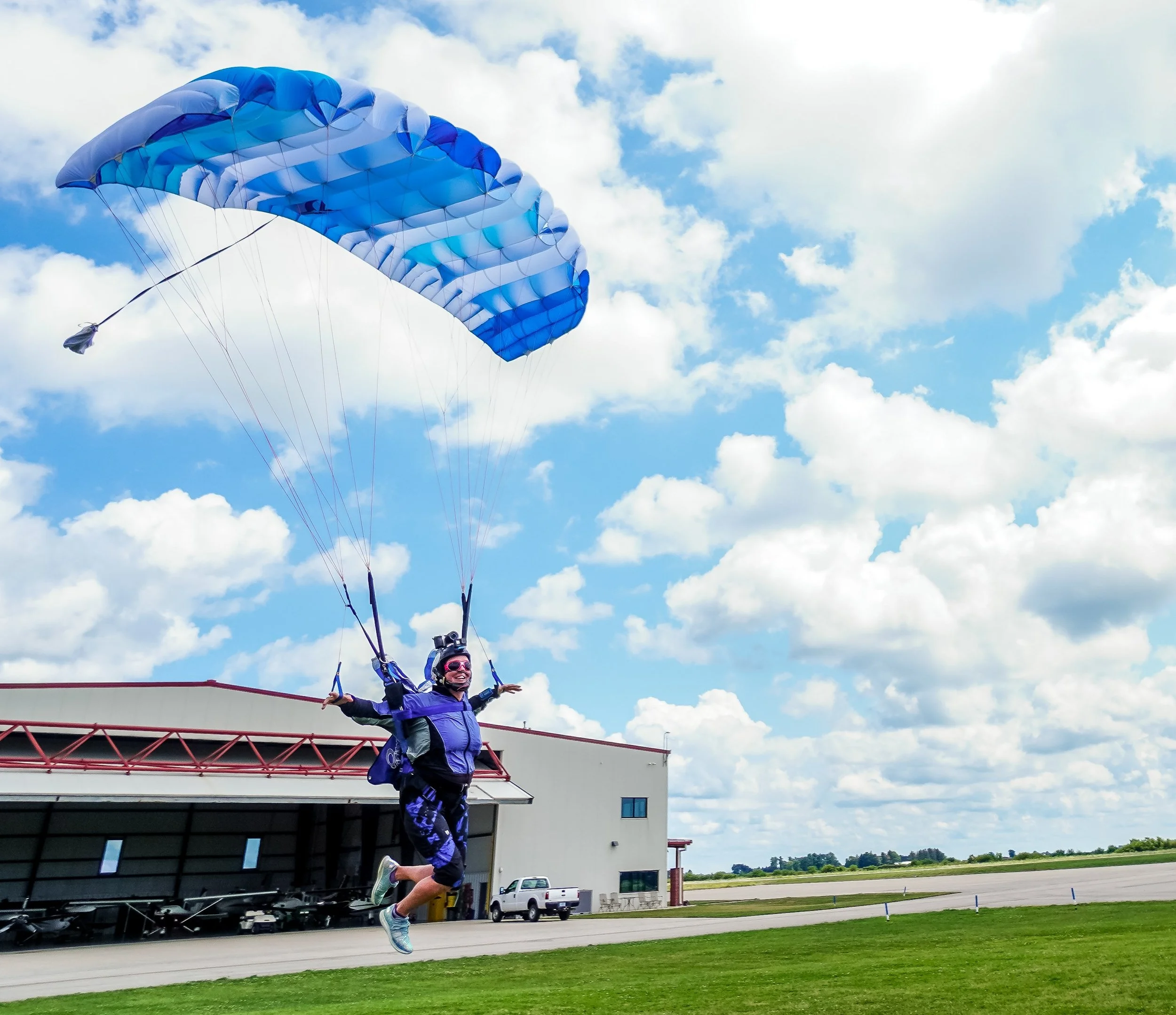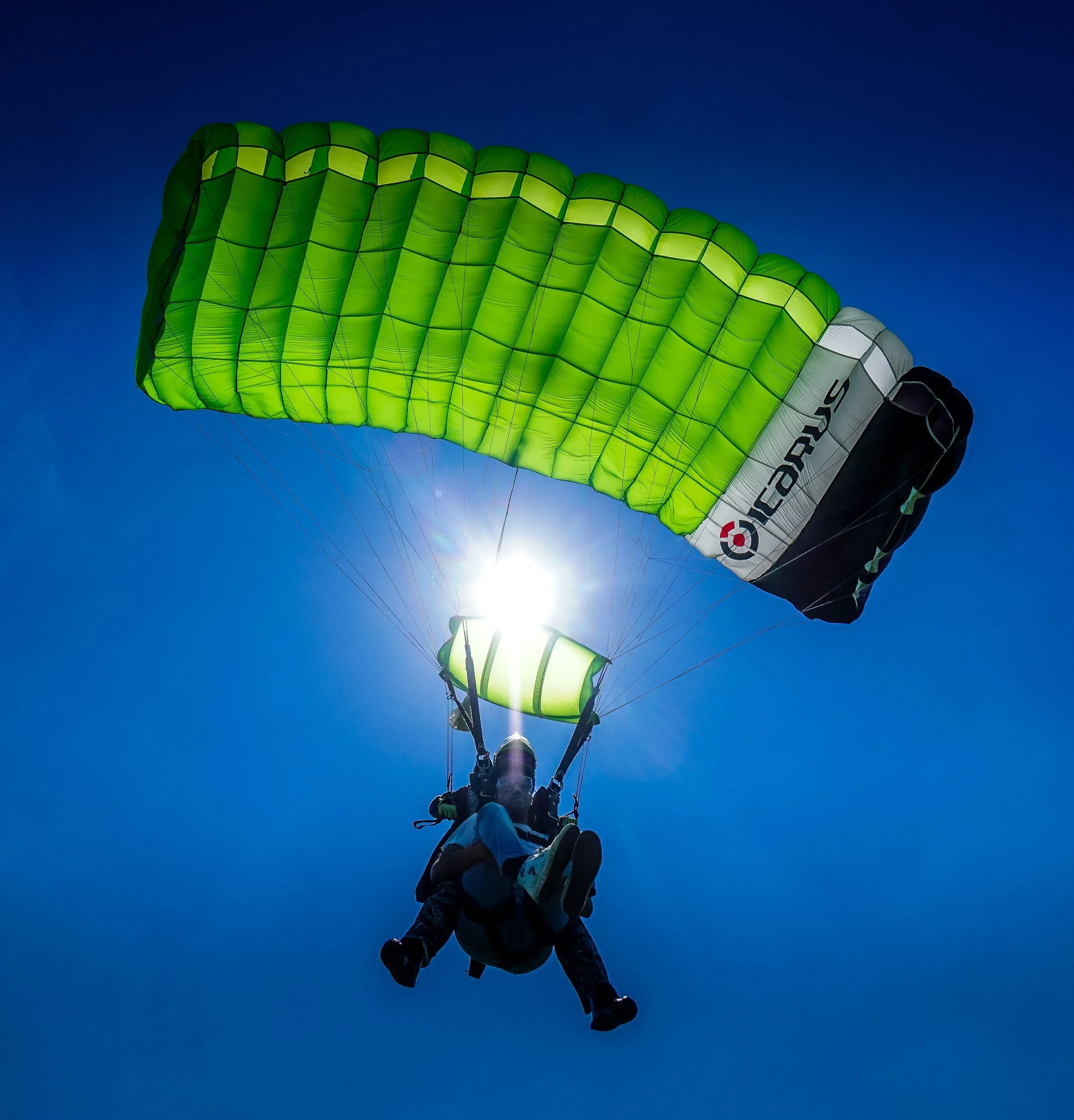Does the parachute open with a sudden jerk?
How Modern Parachutes Work (and Why They Don’t Snap Open Anymore)
Like cars and smartphones, parachutes have seriously evolved. Gone are the days when they popped open so fast it sounded like a gunshot. Today’s parachutes are engineered to open smoothly and safely—no sudden jolts, no rough rides.
Different parachutes serve different purposes. Tandem canopies (the “school buses” of the sky) are big, sturdy, and built to carry two people at a calm, steady pace. Student parachutes are like your first car—easy to handle and forgiving. Reserves, on the other hand, are designed to open lightning-fast in an emergency, while high-performance canopies are built for pros who crave speed and precision.
When a parachute deploys, it goes through a carefully timed sequence—from the moment the container opens to full inflation. For tandems, that whole process takes about six seconds, slowing the pair from around 120 mph to a gentle 15–20 mph. It’s smooth, controlled, and nothing like the hard-opening military parachutes designed for quick, low-altitude jumps.
A big part of that magic comes from a small but mighty piece of gear called the slider, which helps control how quickly the canopy inflates. Together, smart design and modern materials make skydiving not just thrilling—but comfortable and safe, too.




